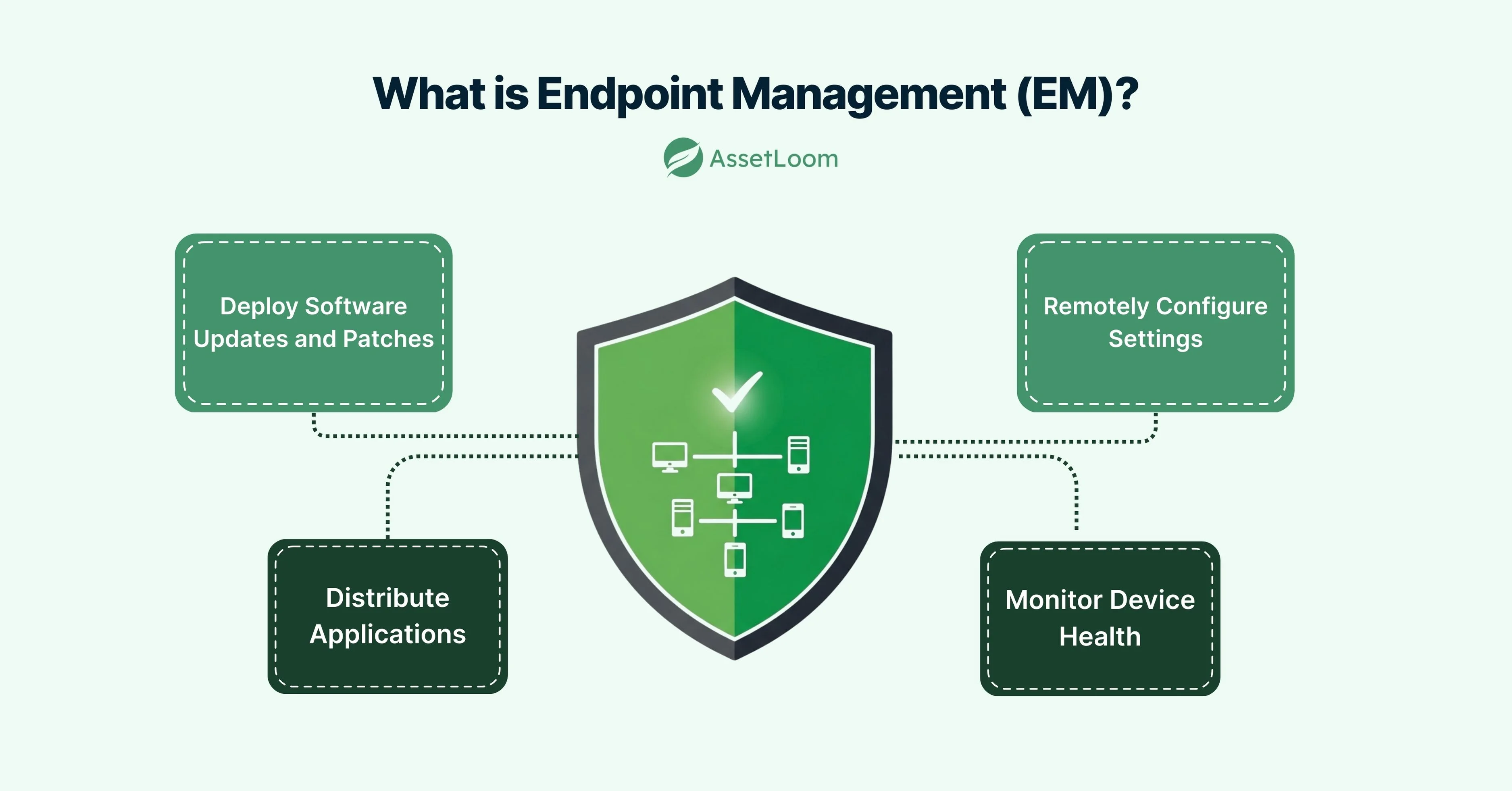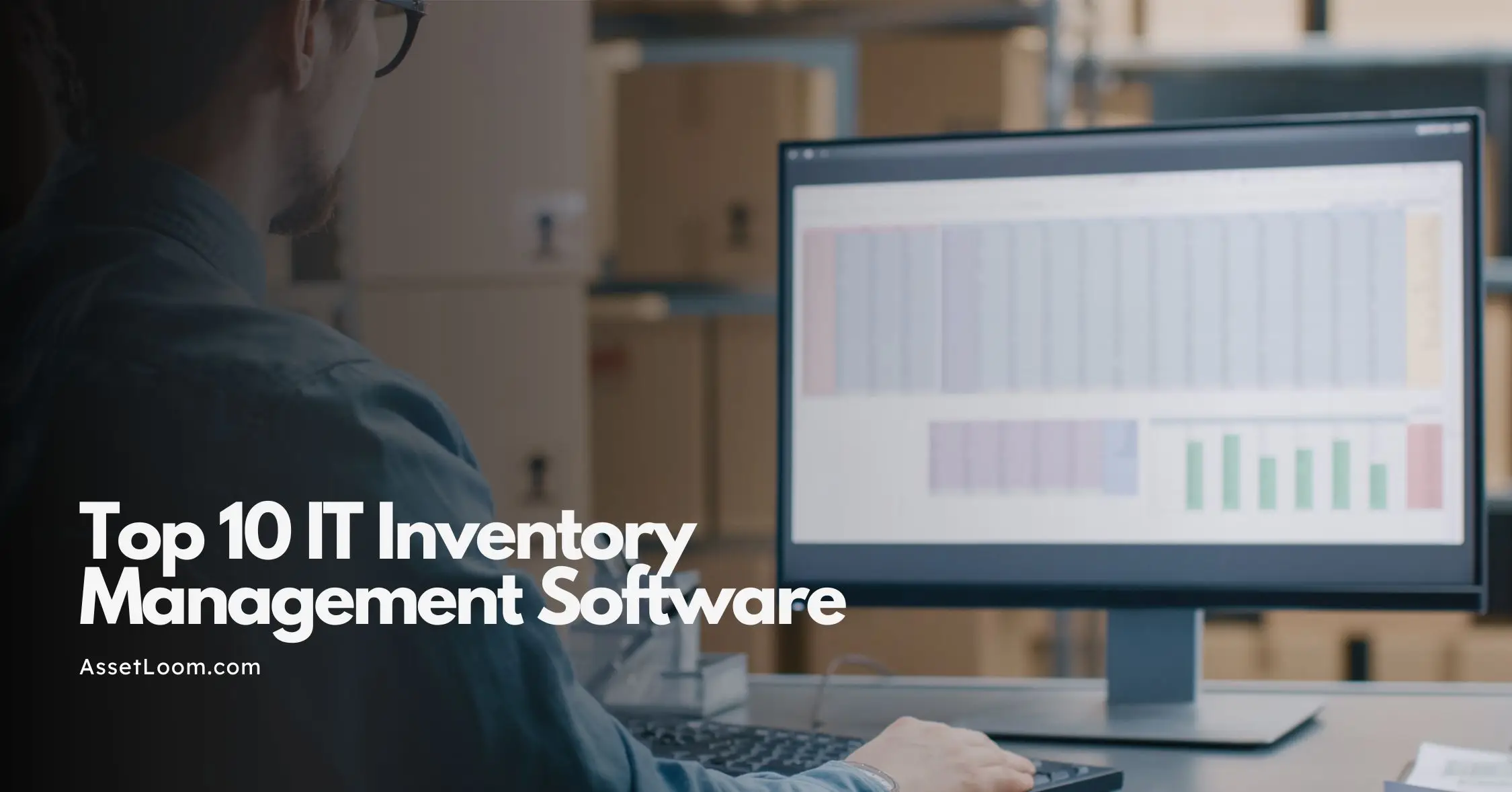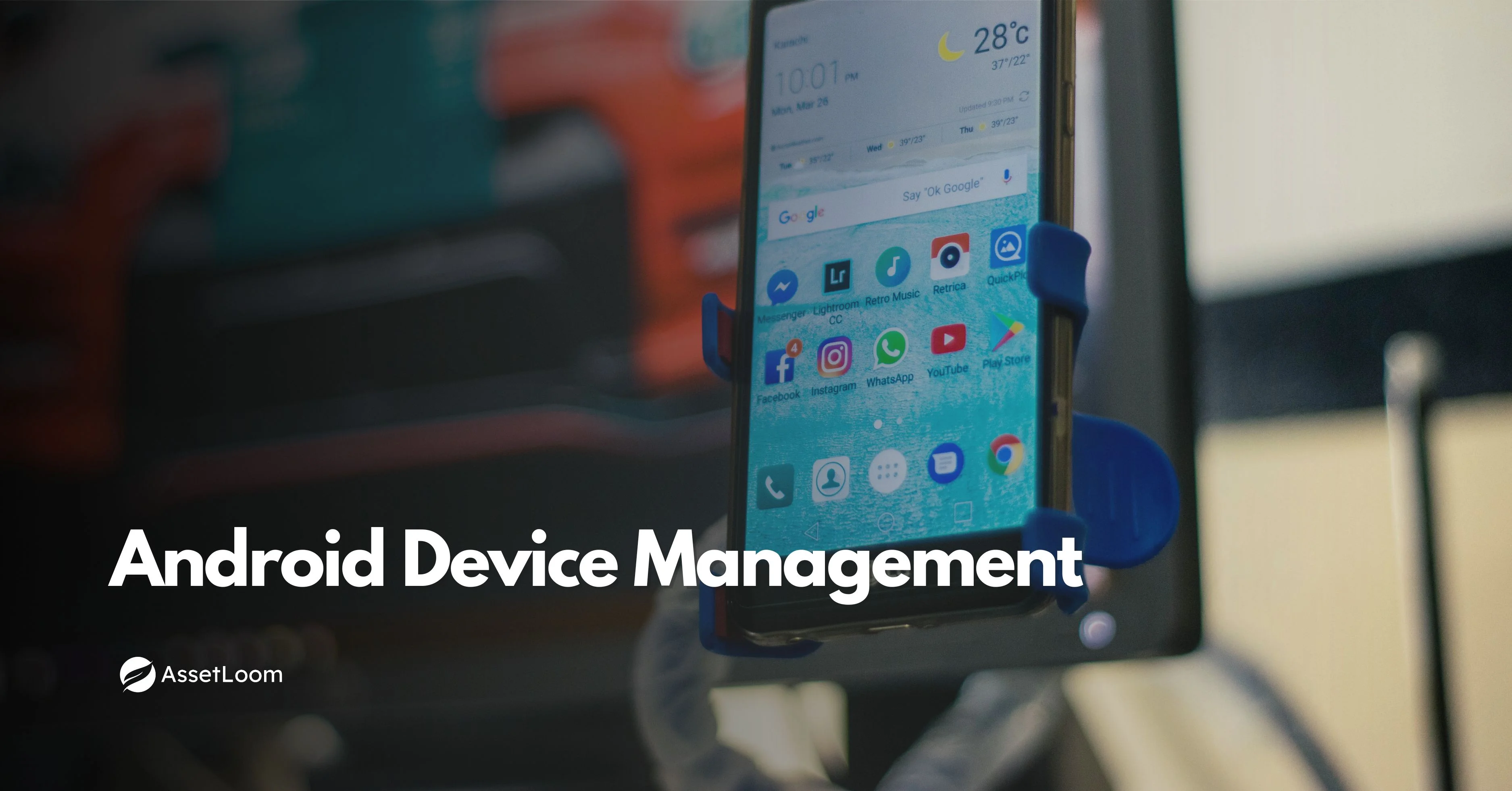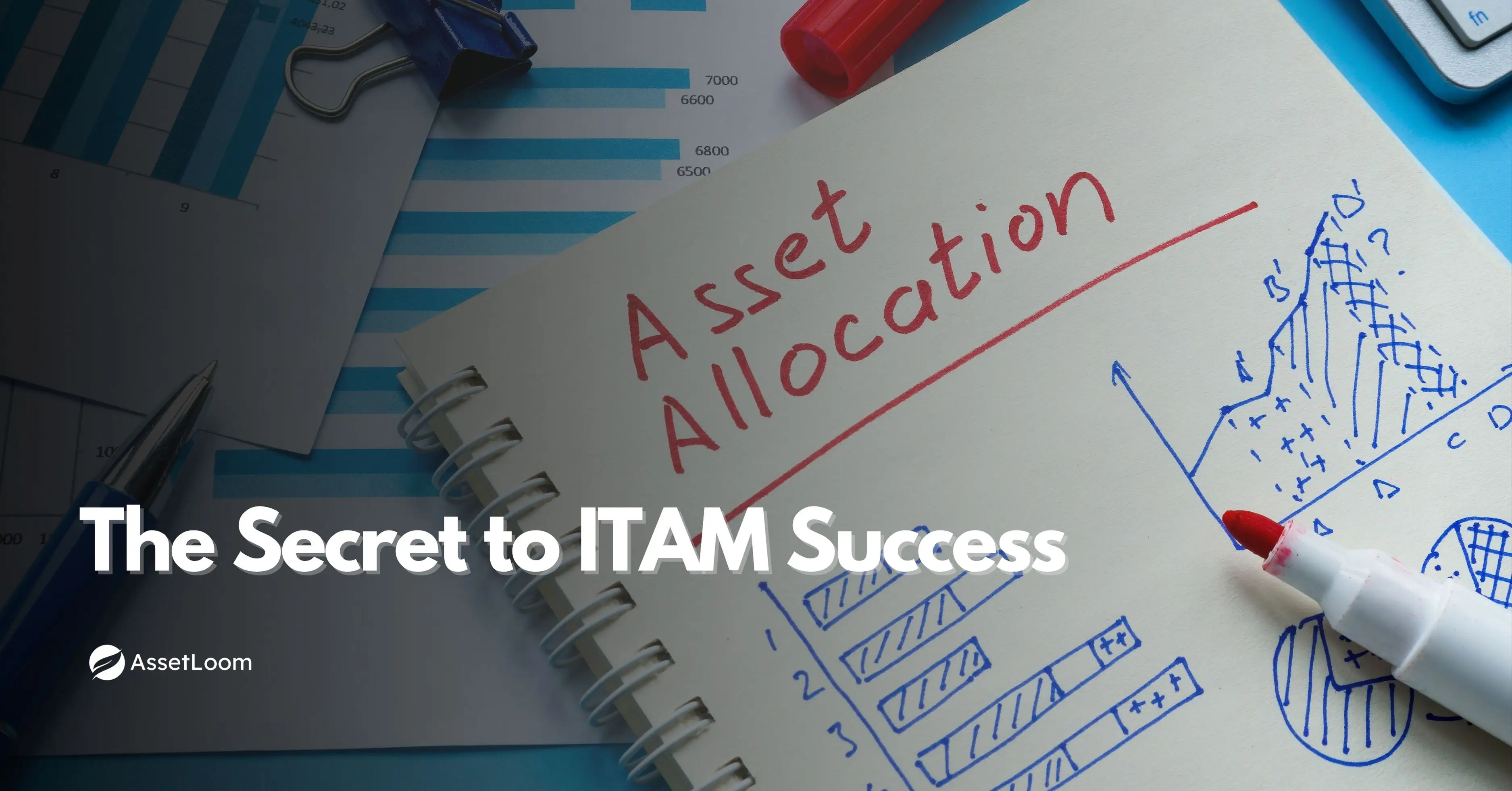Why Endpoint Management is Essential for ITAM Success?
Endpoint management is crucial for IT Asset Management success, as it helps improve asset visibility, enhance security, and streamline management processes.
Endpoints are the devices employees use to connect to your company’s network, such as laptops, smartphones, tablets, and even IoT devices. These devices are essential for daily work, but they also create a significant challenge for IT teams when it comes to managing and securing them. As your organization grows and more devices are added, keeping track of them all becomes harder.
Endpoint management, paired with a solid IT Hardware Asset Management strategy, plays a key role in solving this issue. When endpoint management is neglected, these devices can become security risks, complicate compliance efforts, and lead to unnecessary costs if not properly tracked and maintained.
What is Endpoint Management?
Endpoint management (EM) is the process of overseeing and securing all the devices that connect to a company’s network. These devices, known as endpoints, can range from laptops and smartphones to IoT devices, digital printers, or even point-of-sale (POS) systems. Essentially, any device that communicates with the central network is considered an endpoint.
For example, imagine an employee working from home on their personal laptop. When they log into the company’s system to access files or send emails, that laptop becomes an endpoint. Without proper management, a hacker could exploit this connection to access the company’s sensitive data.
Endpoint management ensures that these devices are secure, up to date, and compliant with company policies. It involves tasks like deploying software updates, monitoring device health, configuring security settings, and enforcing access control.

In practice, an endpoint management system is like a central console that allows IT teams to remotely manage and secure all the organization’s devices, regardless of location. Here's what an endpoint management system can do:
- Deploy Software Updates and Patches: Ensures all devices are updated with the latest security patches and software updates, protecting them from vulnerabilities.
- Remotely Configure Settings: Allows IT teams to push security protocols or network configurations to all devices at once, saving time and ensuring uniformity.
- Distribute Applications: Makes it easy to ensure every device has the necessary software and productivity tools installed and properly licensed.
- Monitor Device Health: Keeps track of device performance, disk space, and battery health to identify and resolve issues before they cause disruptions.
- Enforce Security Policies: Enforces strong passwords, encrypts sensitive data, and restricts unauthorized access to create a secure environment.
In short, endpoint management is vital for keeping your organization’s devices safe, up to date, and fully integrated into your broader IT Asset Management strategy.
The Growing Complexity of IT Assets
As technology evolves, so does the complexity of managing IT assets. What was once a straightforward task of tracking desktop computers and office printers has transformed into a much more intricate process. Today, IT assets come in all shapes and sizes—laptops, smartphones, tablets, wearables, IoT devices, and even cloud-based services. Managing all of these assets, each with its own requirements and risks, presents new challenges for IT teams.
Several factors contribute to this complexity:
- Remote Work and BYOD: Employees now use personal devices to access company networks, making it harder for IT teams to ensure security and compliance across various devices.
- Increased Device Variety: Beyond traditional hardware, companies now manage IoT devices, smart printers, and more, each with unique management needs.
- Cloud and SaaS: With more businesses adopting cloud-based tools and services, IT teams must track not only physical devices but also software subscriptions and user accounts.
- Security and Compliance: More devices mean more potential security risks. IT teams must stay vigilant to protect data and ensure compliance with evolving regulations.
These factors make managing IT assets a challenging and ongoing task. Endpoint management is key to keeping everything secure, up-to-date, and under control.
Why is endpoint management vital for ITAM?
Endpoint management is crucial for IT Asset Management (ITAM) because it directly impacts the security, efficiency, and lifecycle management of your assets. Here’s why it’s so important:
1. Enhanced Security Posture
Endpoint management strengthens an organization's security posture in several key ways:
- Protection Against Cyber Threats: Safeguards devices from malware, ransomware, and unauthorized access by ensuring security software is up to date and vulnerabilities are patched.
- Compliance: Helps meet industry regulations (e.g., GDPR, HIPAA) by securing devices and ensuring they comply with necessary data protection standards.
- Visibility and Control: Provides IT teams with full visibility over each device, allowing them to enforce security policies and track device health to prevent security risks.
- Proactive Threat Mitigation: Continuously monitors endpoints and provides alerts, enabling IT teams to quickly address security threats and prevent potential breaches.
By managing and securing endpoints, organizations can reduce risks and improve overall network security.
2. Improved Efficiency and Cost Optimization
Endpoint management helps organizations streamline operations and optimize costs in several ways:
- Streamlined Device Management: A unified platform simplifies the management of all devices, from laptops to mobile phones, ensuring everything is configured, updated, and secured from one central point.
- Automated Processes: Automates routine tasks such as software updates, patching, and device configuration, saving IT teams time and reducing the need for manual intervention.
- Reduced Costs: By preventing security breaches, reducing downtime, and improving software usage, endpoint management helps lower IT support costs and ensures assets are used efficiently.
- Optimized Resource Allocation: Helps identify underused or obsolete devices, allowing businesses to reallocate or retire assets to avoid unnecessary spending.
- Improved Productivity: With automated updates and centralized management, employees experience fewer disruptions, leading to smoother workflows and increased productivity.
By improving efficiency and reducing unnecessary costs, endpoint management ensures that IT resources are being utilized effectively and at optimal value.
3. Supporting Digital Transformation
Endpoint management is a key enabler of digital transformation, helping organizations adapt to modern technological demands:
- Adapting to Remote Work: As remote work becomes more common, endpoint management ensures that devices used outside the office are secure, compliant, and connected to the company network without compromising safety or performance.
- Enabling Business Objectives: By providing a secure and well-managed IT environment, endpoint management supports overall business goals, including scalability, collaboration, and agility.
- Supporting Cloud Adoption: Endpoint management integrates with cloud services, ensuring that devices accessing cloud-based resources are secure and properly configured, making the transition to cloud solutions smoother.
- Enhancing Collaboration: With proper endpoint management, employees can securely access the tools and resources they need, regardless of location, which supports better collaboration across teams.
- Fostering Innovation: By automating routine IT tasks and improving device management, endpoint management frees up IT teams to focus on innovation and strategic projects that drive digital transformation.
Endpoint management ensures that as businesses evolve and adopt new technologies, their IT infrastructure remains secure, efficient, and aligned with organizational goals.
4. Integration with ITAM
Endpoint management is crucial to the success of IT Asset Management (ITAM) by providing seamless integration that enhances visibility, control, and decision-making:
- Foundation for Secure IT: ITAM offers a clear inventory of all assets, which endpoint management uses to ensure that devices are properly tracked, configured, and secured throughout their lifecycle.
- Informed Decision Making: Data from endpoint management, when integrated with ITAM, provides valuable insights into asset usage, device health, and performance, allowing IT teams to make better decisions about resource allocation and future purchases.
- Comprehensive Asset Tracking: By linking endpoint management with ITAM systems like AssetLoom, businesses can track not only physical assets but also software and services, ensuring everything is accounted for and optimized.
- Lifecycle Management: Integration ensures that endpoints are properly maintained, updated, and eventually decommissioned in line with the company’s asset management policies, extending the life of devices and optimizing the asset lifecycle.
- Cost Efficiency: Combining endpoint management with ITAM helps identify unused or underutilized devices, enabling organizations to better manage resources, reduce redundancy, and avoid unnecessary spending on new assets.
In summary, integrating endpoint management with ITAM ensures that all assets, whether hardware or software, are securely managed, well-tracked, and effectively utilized, leading to improved efficiency and reduced risk.
Conclusion
Endpoint management is crucial for the success of IT Asset Management (ITAM). It ensures that devices are secure, well-maintained, and properly tracked, helping businesses reduce risks and optimize their IT assets.
By improving security, efficiency, and supporting digital transformation, endpoint management enhances overall ITAM strategies. It streamlines processes, helps make better decisions, and ensures that all assets contribute to business success. Integrating endpoint management with ITAM is key to maintaining a secure, efficient IT environment as technology continues to evolve.

Related Blogs
Subscribe for Expert Tips and Updates
Receive the latest news from AssetLoom. right in your inbox


